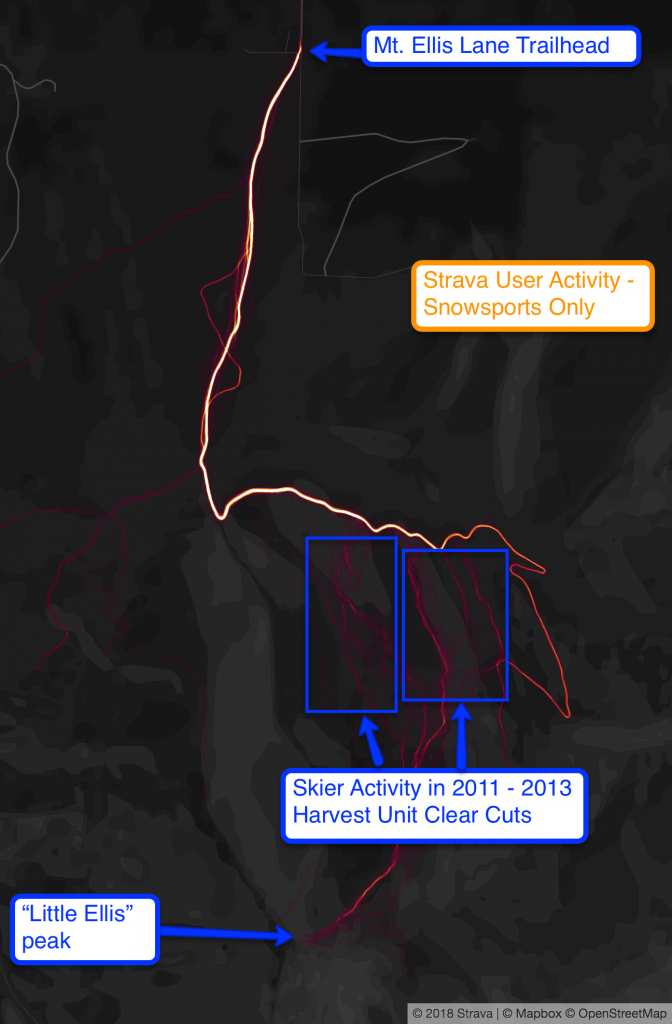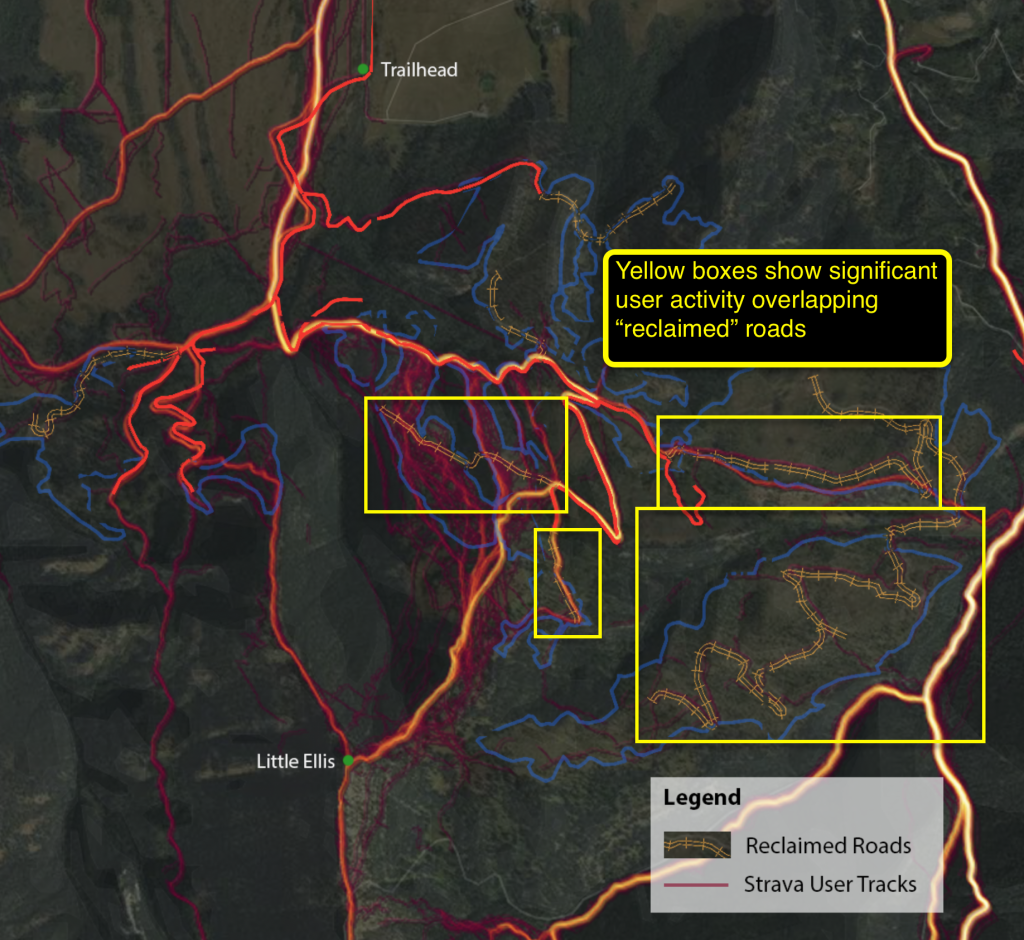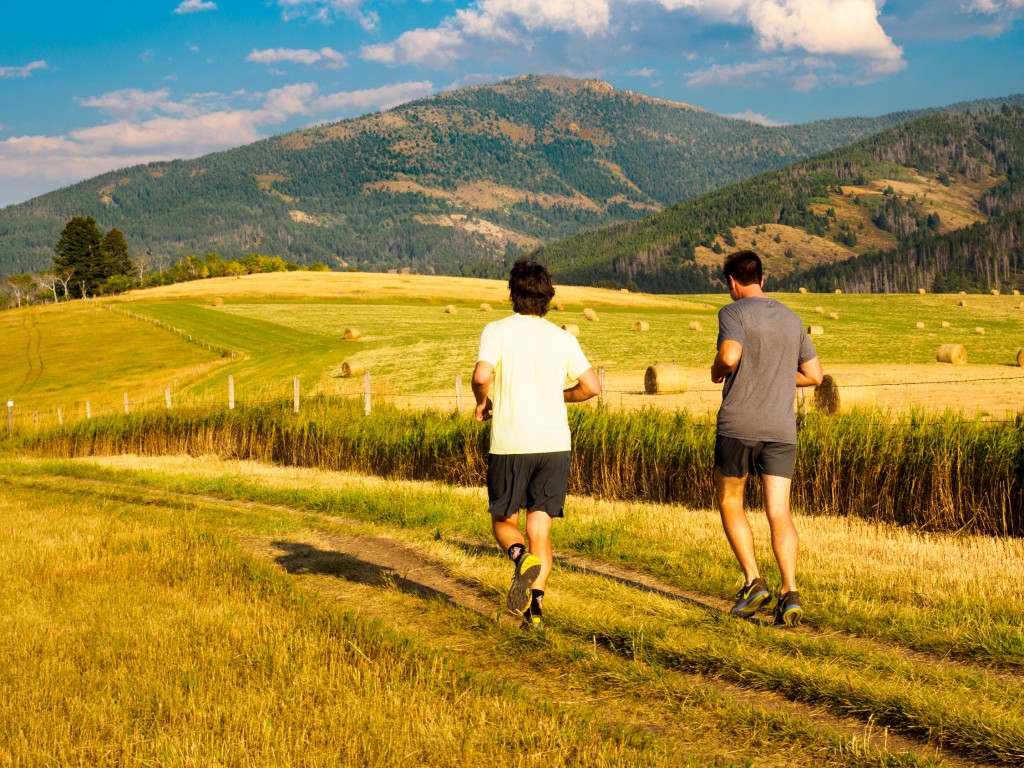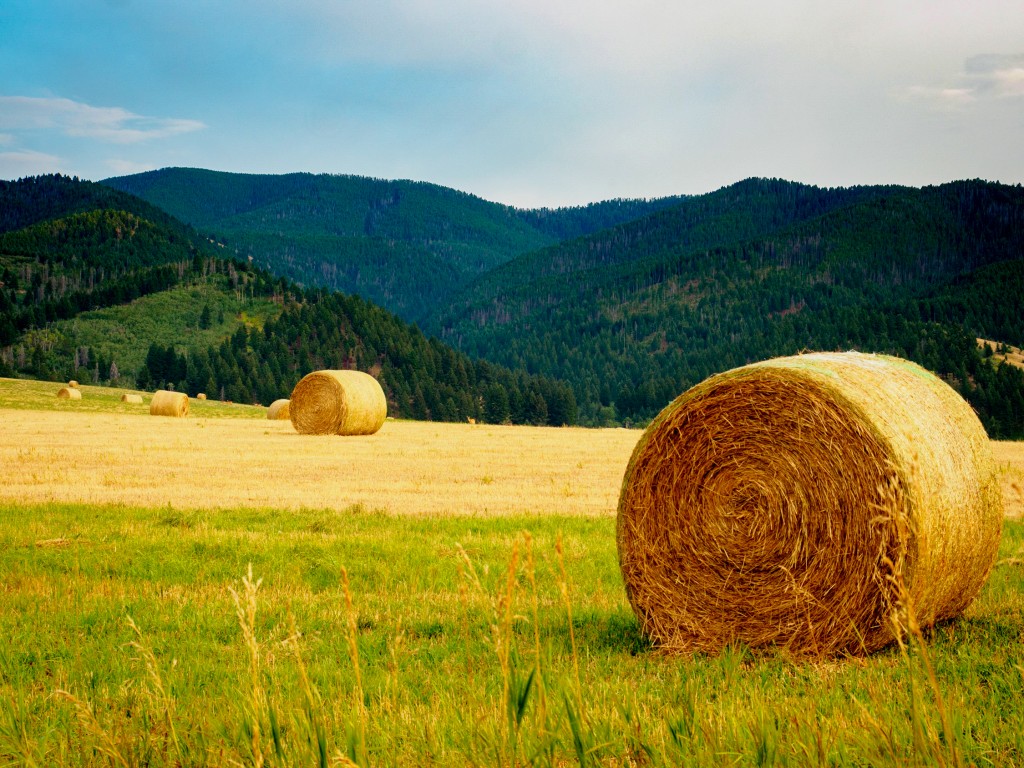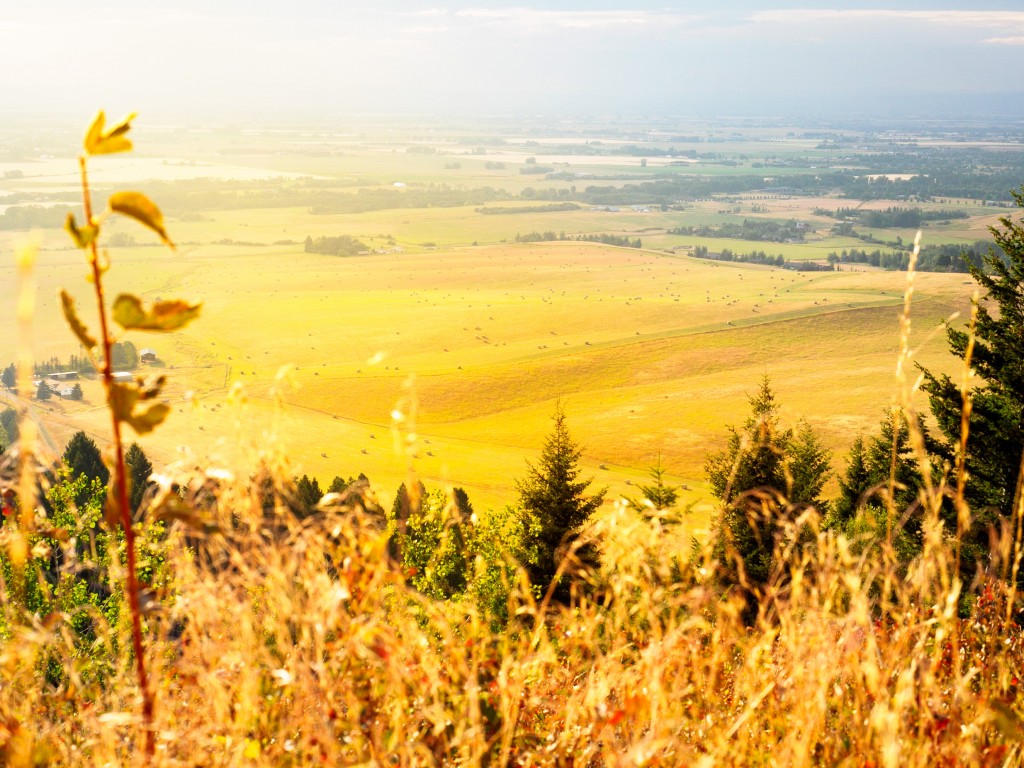It started innocently enough. A quick five or seven-mile loop through Tom Miner basin just north of Yellowstone National Park; a perfect “taper” run leading to the race on tap next weekend.
With Mipso playing on the Sweet Pea stage till sundown, I ended up with a late start out of Bozeman the night before. Nearing the trailhead, both moose and black bear darted into the shadows, fleeing my headlights piercing the tunnel of dark through the otherwise untrafficed narrow dirt road.
I slept unusually late, not starting my slow jog out of the trailhead until well into the day. I carried a hand bottle, a few gels, a GPS watch. My GPS-equipped smartphone—my typical companion when running in new terrain—remained in the truck on account of my hasty pack job the night before leaving me armband-less.
The slate-colored sky spit a few drops of rain with barely enough substance to be considered drops. I hoped against a downpour, knowing what rain would mean to me in my thin t-shirt and short shorts at an elevation where, even in early August, the snow was only just recently melted out (my previous attempt to run this loop in June was thwarted by feet-thick snow).
Five or so miles in, the first concern registered: the trail didn’t seem to be going the correct way. I should be closing lolly-pop head loop back to the lolly-pop stem leading back to my truck. Enjoying the single-track (sloping gently downhill) and the views, figured I’d run a bit more and see where things led.
It’s funny how the mind will hold out hope, even in the face of mounting evidence against. The trail eventually turned the direction I expected. Even as ten miles ticked by, I help out hope of coming out where I’d started (in fairness, my glance at the map that morning had been cursory—perhaps I had simply misestimated the distance).
At mile fifteen, reality set in, in the form of an unrecognized trailhead parking lot, empty except for a single locked vehicle. The trailhead offered no information except for a faded, region-scale map.
I studied the map as best I could, gleaning the names of nearby creeks, and trying to make sense of what I’d run. With a race the next weekend, I didn’t dare run back the way I’d come (fifteen miles was already well-more than my taper intended—doubling my fifteen miles was right out).
By now, the sun shone warm and brightly. With a clear sense of direction, I set out to short-cut over the ridge to the north of me, straight back toward the trailhead where I started.
Easy running through open meadows turned to slow-moving bushwacking over thickets of downed trees. I opted to drop into a brushy, creek-filled drainage, where I knew a trail existed and where I hoped I could make better time.
The creekside trail, like many Montana trails, turned out to be more concept than physical reality—discernable mostly by the cut ends of logs where the Forest Service had “maintained” the trail some years prior. In the thick brush adjoining the noisy creek, I sang inane songs (oh Tom Miner / he had a basin / trail running / in that basin…) at the top of the lungs, wishing for my bear spray (at home with the armband that would otherwise have carried my smartphone/GPS).
The trail climbed up from the creek a bit. I found blueberries, which I enjoyed with relish, having consumed the last of my calories hours prior. Then raspberries. Wishing for strawberries, as if by divine providence, I found a few pea-sized strawberries, hiding in the brush. Rounding a corner (singing at the top of my lungs), I startled at a great crashing in the woods above me to see a black bear (the largest black bear I’ve ever seen) sprinting up the steep embankment above me and away.
As the afternoon light began to fade the trail climbed out of the ravine and into more open country. My eyes sought the surrounding ridgelines and promontories to make some sense of where I was—to no avail. By now, the sky was again slate-colored. A wind picked up, and suddenly cold pellets of rain were spitting from the sky, and then a proper downpour. I cowered, curled into a ball, under the tall mass of a dead Douglas Fir, trying to keep out of the freezing rain and biting wind.
Pinned as I was, I had time to take stock of my situation:
- Current time: 6 pm
- Estimated elevation: 8000 feet
- Weather: thunderstorm, estimated duration unknown
- Location: lost
- Nearest known location: five hours away
- Hours of daylight remaining: three
- Surest option to escape the elements: none
- Plan: wait and hope for storm to blow itself out; continue north, climb to ridgeline; hope for the best
Miraculously, the storm cleared. Late evening rays of sun pieced out below the clouds. Shivering vigorously, I willed my body to hobble faster even while keeping myself wrapped in semi-fetal bear-hug, hoping to drive my calorie-deprived and exhausted body hard enough to warm up as I threaded the gauntlet of sopping brush and vegetation.
Gaining the ridge (still shivering as I ran), what little hope I had sank—ridges and peaks and valleys spread away from me in all directions, none of which offered a hint of familiarity. Hope rose again as I discerned a trail, a fairly substantial trail, bearing the track of a dirtbike that had passed, possibly even that day.
Slowly, I formulated a new plan: follow the trail. Logically, it must lead to civilization, sooner or later.
And so I did. Running as best as my wasted legs and still-bear-hugging-myself-posture would allow, I ambled along the trail, which dropped off the ridge through a basin, then climbed back to the ridge where it clung stubbornly against my will.
About this time, I recall thinking to myself, “under different circumstances, I’d be astonished by the beauty, here.” Indeed, valleys and ridges stretched in every direction, soft-yellow evening light still cutting through the clouds, illuminating a landscape white and shining in its higher reaches with the iridescent sheen of accumulated storm sleet. And there, in the midst of it all, and a sole, nearly naked runner traversing across the skyline, shadow stretching clear to Pennsylvania.
And then, nailed to a gnarled tree clinging to a saddle on the ridgeline: a sign, and the rushing moment of realization of my exact location.
This whole time, my frame of reference put me somehow south of where I started. In fact, under the directionless, sunless sky, I had traveled north at a split in the trail that morning, not south, and had traveled some twenty miles north since. At the moment of realization, with some 45 minutes of daylight remaining, I found myself equidistant between Bozeman, some 25 or 30 miles to the north, and the trailhead to the south where my truck was parked.
Well, shit. At least I knew where I was. Given that it was nearly 9 pm on a Sunday, I figured my odds of finding a ride from Hyalite at 11 pm would be slim, meaning hoofing it through the night back to town, likely until 3 or 4 am, and then waking the next morning with my truck abandoned a two-hour drive away. I’d have to convince someone to spend half a day driving to help me retrieve my abandoned vehicle—what a pain! So, instead, I turned east, hoping to be able to reach the floor of Paradise Valley (some many miles distant) and the road running through, so as to be able to walk through the night on the roads I had driven the night before back to my truck.
No such luck, of course. The “trail” that was supposed to exist leading out along the creek was as much a fiction as the last “trail” I had traveled. Darkness settled.
I didn’t much mind the scratches of the brush, but I dreaded the sopping water on every leaf. As darkness settled, I tripped, slide, and stumbled with increasing frequency. Eventually, I found what little of a trail it was, again only discernable but cut log-ends, but far better (when I could stay on it) than climbing up, down, and over the beetle-kill deadfall.
For a while through the moonless night, I navigated by the dim light of the heart-rate monitor embedded in the back of my watch, turned out towards the woods like a flashlight. I eventually exited the thick woods into more meadow-like terrain. I found and followed a faint two-track, ending abruptly at a gate. Something large moved in the nearby woods. Cows, it turned out, after much yelling and throwing of things into a mute and blank darkness. Lights on a house shone in the far-off distance.
Then the watch chirped a warning—5% battery remaining. Without its feeble light, moving in the pitch-dark became mostly falling, causing me to fear injury. I used the last of the watch battery to gather dry grass under the branches of a tree, burrowed into the mounded grass as best I could and settled in to wait for sunrise.
I slept some, fitfully. I would wake, shiver violently for a spell, then drift back to sleep. (In the morning when I awoke, my pecs were oddly sore from their involvement in my shivering.)
I awoke in the predawn light. Further down the valley below me, something moved—headlights, passing on a road a mere quarter mile from where I had stopped, unable to make further progress.
A long story short, with some help from strangers, I found my way back to the unknown trailhead I had emerged at, the afternoon before, and from there the fifteen miles back to my truck. I stopped to nap in the sun along the way—once, then twice. I gathered thin thimblefuls of berries when I found them and drank greedily from the cold mountain streams. I lost the trail at one point, but this time spent an hour back-tracking to find it rather than forging another “shortcut” to god-knows-where.
At 3 pm, after 28 hours out, I rounded the last bend in the road to the trailhead, in sight of my vehicle—a site for sore eyes, if there I’ve known one. After gorging myself on what calories I had left in the truck, I started the engine and pointed toward home—chastened, relieved, exhaused—and now knowing what it means, truly, to be lost.


